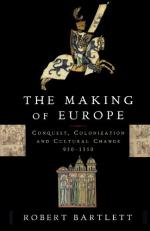|
This section contains 2,197 words (approx. 8 pages at 300 words per page) |

|
The Aristocracy. The aristocracy (or nobility) occupied the apex of the social hierarchy in preindustrial and industrializing Europe. It was the privileged class. Nobles had considerable economic and political power; in many places they paid no taxes. They considered themselves superior to other people by blood (noble status was inherited) and by training and education. While the nobility is sometimes referred to as a class, it is more accurate to speak of the nobles as constituting a rank or an order. Class terminology came into use later. The other traditional orders were the clergy and the commoners. In France these groups were referred to as estates. The clergy were members of the first estate, and the nobility constituted the second estate. High-church officials were the younger sons of the nobility, which means these two groups largely overlapped. Everyone...
|
This section contains 2,197 words (approx. 8 pages at 300 words per page) |

|




